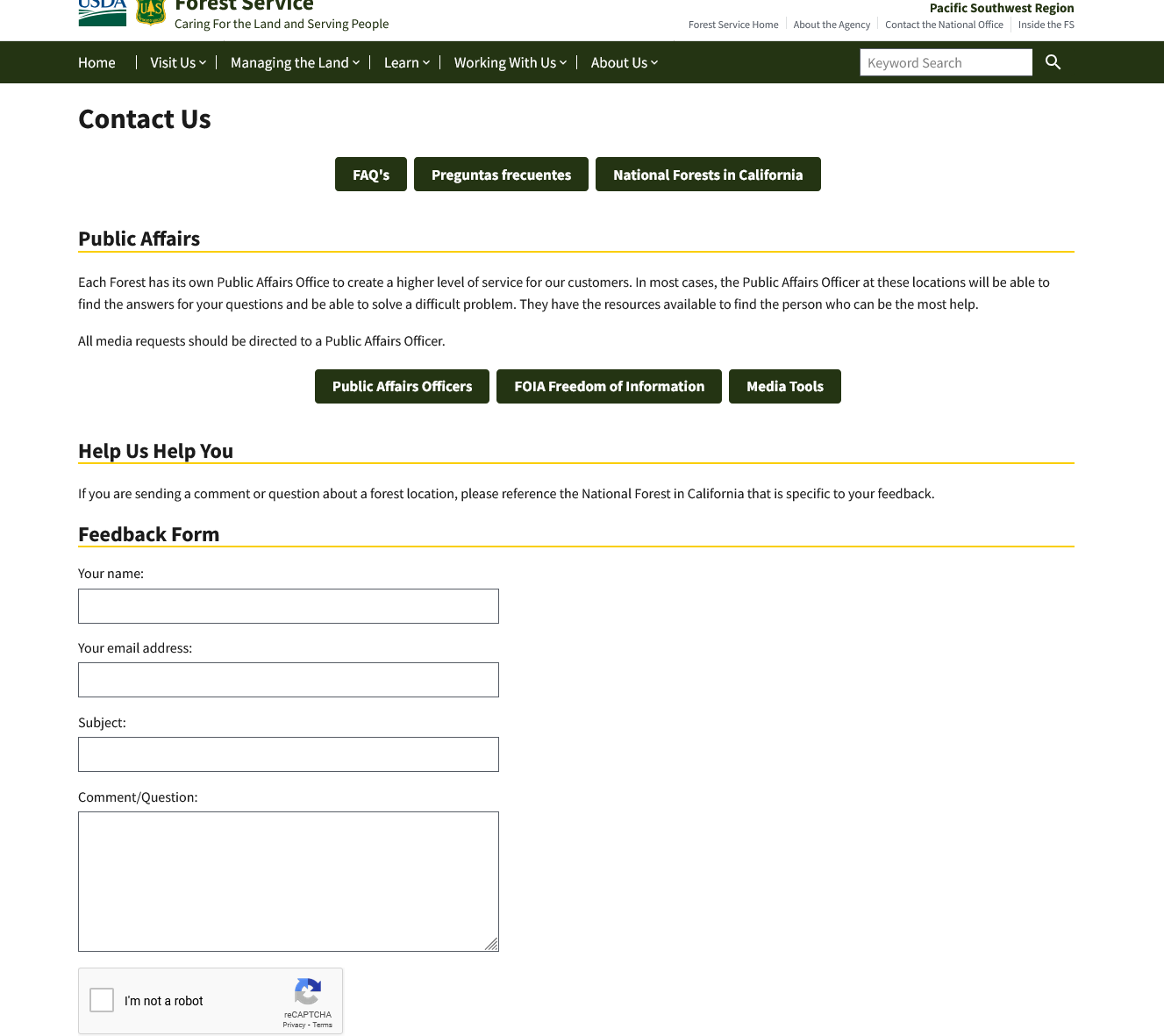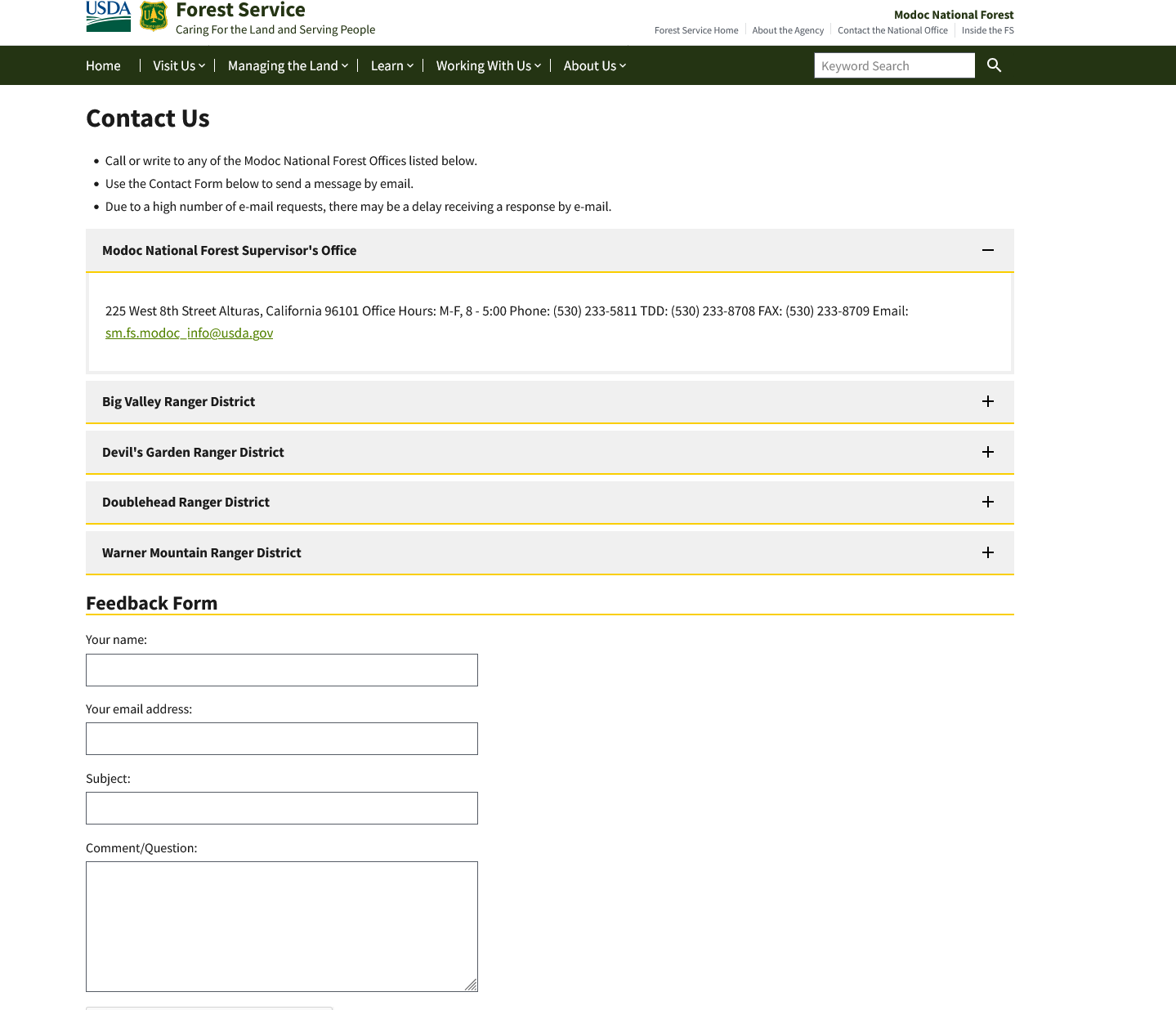Cindy Chojnacky came to the Employee Directory discussion late, and added this comment..
I was off grid backpacking in your backyard (northern Colorado from Rahwahs to Eagles Nest) July-August so missed discussion on FS employee directory. I am not interested in the argument over politicization of line officers or even employee need for privacy. But what I didn’t read from anyone, maybe I missed it, is that the directory was a great resource for the public that has been removed. It makes the FS seems much more insular and self-protective to me as this resource was available for decades. As an example, I wanted to send Black Hills Forest Supe a concerned message about something I saw while visiting the forest but had to send it to the staff mailbox in hopes it would be forwarded. Line officers should be accountable to the public even though it is a hassle. I say this as former line officer, national and regional spokesperson, PAO and an environmental reporter. Dropping the directory tells me the Forest Service does not think so. Sorry to come in late on this issue.
I thought that this was interesting because there are so many reasons people might want to get in touch with different FS folks. It seems like some work well and some don’t, and as usual in a decentralized organization, responses can be all over the map. Maybe with the two above Region 5 contact forms, it seems like it makes more sense to call than to email. Plus you get the experience of talking to nice FS people at the front desk in various places in California sending out positive human vibes.
Call- “I want to talk to the Supe”, Member of Public (MP) leaves voicemail, Supe gets it perhaps via phone.
Email- sent to box, box person routes to Supe, Supe gets it and replies via email.
I wonder which is easier for the FS? Which feels better to the public (given that each member of the public has his/her/their own druthers)? Sigh.
I think Cindy brings up an additional set of questions.. suggestions for things that need doing, or even observations of illegal activity. Which I think is important because so many of the “things” could be done by volunteers or partners. Like logs across roads or sign rehab.
I can think of a few reasons personal contact may have changed.
Perhaps it’s part of today’s culture. For example, when I tried to give away my place in a (full) field trip at SAF, I emailed but never heard from anyone. I assumed they were too buy. I was able to both volunteer and unvolunteer through an app without contacting anyone. Some of us may remember discussions of “high tech” versus “high touch” culture, well it’s still going on.
Are you having to do more with less these days? Likely you are shifting away from a high touch approach when it comes to engaging customers because treating every customer with special care is expensive and time consuming.
The difficult part for government, though, is that the FS is a bit of a monopoly in a given area, so we can’t go some more responsive elsewhere. And if taxpayers don’t trust that their money is used wisely, they might not be as willing to fund it. So accountability and transparency are critical for trust.
There are the other reasons we’ve discussed, for the changes ease of contacting folks like safety of humans and security of information technology. Others?
Acknowledgements seem to me to be an important step. For example, when I contact the WO Press Office, they tell me right away they received my email. They might not ultimately be able to answer the question, or may get to it in a few weeks, or may need to be reminded, but I know they have it. My latest attempt with USDA media did not receive an acknowledgement.
I’m curious as to what kind of approaches to such concerns or observations as Cindy mentions above (logs across trails, apparent violations of regulations and so on) folks have observed, and how well they have worked, both for the District or Forest and for members of the public. FS employees “what could members of the public do to help you serve them better?” and members of the public “what things do some FS units do that smooth the path of getting what you need from them?” We’re mostly about “catching people doing something right” but if you want to share the opposite, that’s OK too. No need to include specific individuals or units.
It’s always fun to compare the BLM and the FS given that many of the same external forces affect both of them. Here’s the California contact page. They also have general mailboxes but have info on state leadership. I personally prefer emails to feedback forms because I have a record of them. But that’s just me.


